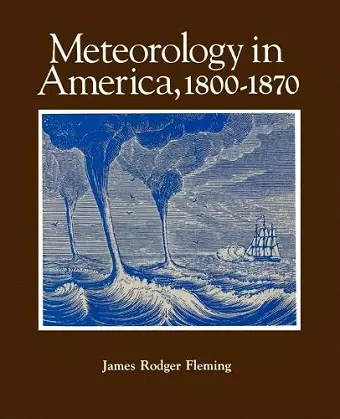Meteorology in America, 1800-1870
Format:Paperback
Publisher:Johns Hopkins University Press
Currently unavailable, and unfortunately no date known when it will be back

Between 1800 and 1870 meteorology emerged as both a legitimate science and a government service in America. Challenging the widely held assumption that meteorologists were mere "data-gatherers" and that U.S. scientists were inferior to their European counterparts, James Rodger Fleming shows how the 1840s debate over the nature and causes of storms led to a "meteorological crusade" that would transform both theory and practice. Centrally located administrators organized hundreds of widely dispersed volunteer and military observers into systematic projects that covered the entire nation. Theorists then used these systems to "observe" weather patterns over large areas, making possible for the first time the compilation of accurate weather charts and maps. When in 1870 Congress created a federal storm-warning service under the U.S. Army Signal Office, the era of amateur scientists, volunteer observers, and adhoc organizations came to an end. But the gains had been significant, including advances in natural history and medical geography, and in understanding the general circulation of the earth's atmosphere.
Detailed and handsomely illustrated, this work is an original contribution to the history of 19th-century science. American Historical Review It is surprising that the history of meteorology in the United States has waited so long for a serious historical analysis... American historians, especially those with little previous understanding of American science, need to read this book. -- Gregory A. Good Journal of American History Fleming's important contribution to our understanding of science during its formative period in America is to show the extent to which meteorology was shaped by cultural values. -- Bruce Sinclair Science Fleming's well-documented book is based on an impressive list of primary sources. Particularly useful are the numerous maps, illustrations, and graphic representations that document the constructs of data and theory as these changed over time. -- Sally Gregory Kohlstedt Journal of the Early Republic A welcome addition that fills one of the major gaps in the existing literature on the history of meteorology. -- Stanley David Gedzelman American Scientist
ISBN: 9780801863592
Dimensions: unknown
Weight: 674g
292 pages